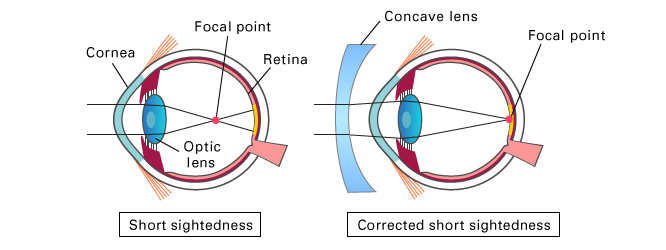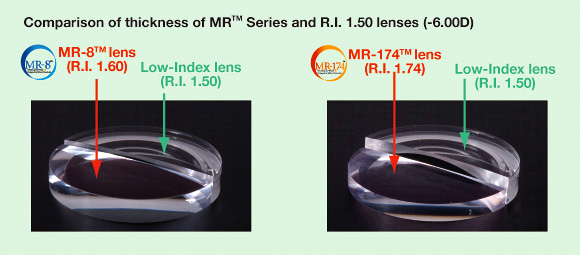Thinner Lenses Thanks to Mitsui Chemicals

Do you wear glasses? Even if you don’t, you may well need to wear glasses in the future. So, let us tell you a short story.
Around the world, most ophthalmic lenses are made from plastic. But how are these plastic ophthalmic lenses actually made?
The raw materials used to make plastic ophthalmic lenses are liquids. Called monomers, these liquids are poured into a glass mold (casting) and then heated until they harden (curing). Once hardened, the semi-finished lens is then ground to a precise degree suited to the optical power and finished with a smooth surface (polishing). That is how lenses are made. The next step is to add color to suit the customer’s requirements (tinting), before finally treating the lens to prevent damage (coating). Then you have a finished product.
Once they have been made, lenses are shipped from the manufacturer’s factory to local opticians. They are then fitted to whichever stylish frame you have chosen with the optician, to become your very own glasses.

Our role at Mitsui Chemicals is to manufacture the raw materials (monomers) used in ophthalmic lenses
So, why is it that wearing glasses enables us to see things more clearly? Let’s take a look at short sightedness as an example.
Light reflecting from an object passes through the lens in your eye. A focal point then forms on the retina, enabling you to see a clear image. If someone suffers from short sightedness (myopia), the focal point forms in front of the retina, causing objects to appear blurred.
The solution is to place a concave lens in front of the eye. This causes the focal point to form on the retina, enabling the wearer to see objects clearly.

The more severe the short sightedness becomes, the stronger the lenses required, which means thicker lenses. But we ideally want lenses to be as thin as possible.
So what can we do to make lenses thinner? Higher the refractive index. The refractive index measures the extent to which light is bent. Materials with a high refractive index are able to bend light more effectively even if they are thin.
In 1982, around the time that Japan started to switch from glass to plastic lenses, we began to carry out research into ophthalmic lens materials with a high refractive index. At the time, the refractive index of plastic used in ophthalmic lenses was around 1.5. As this is lower than the refractive index of glass, lenses had to be thicker. Demand however was for thinner, lighter lenses.
Rather than relying on the technologies of others, we decided to explore the possibilities of developing our own unique technologies. We focused on sulfur, whose superior high refractive index properties were yet to be fully utilized. We tried combining it with our core urethane technology. The result was our unique sulfur-containing urethane technology.
Following a process of trial and error, in 1987 we finished work on a high refractive index ophthalmic lens material called MR-6™, the first sulfur-containing urethane lens material in the world.
Lenses made from this material, developed only by Mitsui Chemicals, were thin, light, robust, and of course safe. They became highly acclaimed as a result.

Continuing with our research, in 2000 we developed MR-174™, a plastic lens with a world-leading refractive index of 1.74. The MR™ Series that has grown out of our research and development now boasts a leading share of the market for high refractive index lens materials, both in Japan and overseas.
There may be no obvious link between improved eyesight and Mitsui Chemicals’ research and development, but the truth is that they are closely linked.
